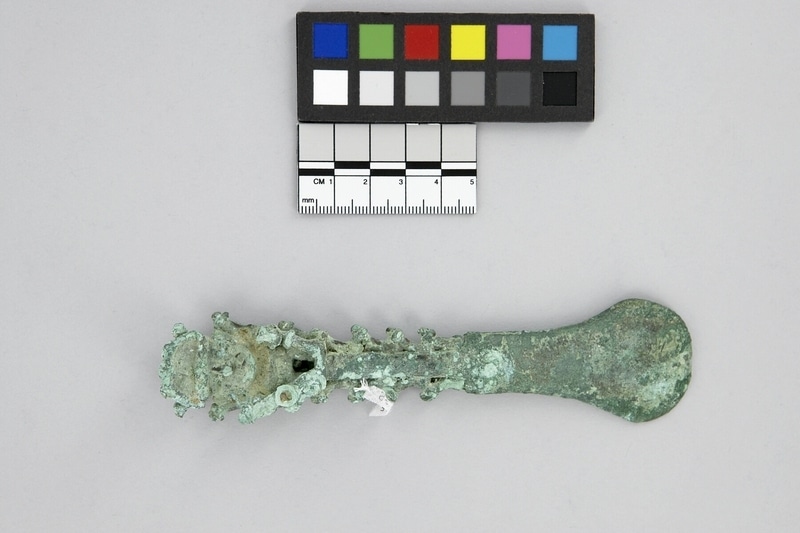Knife Item Number: Sf545 from the MOA: University of British Columbia

Description
A small, semi-circular blade which tapers into a handle that is surmounted by a frontal, standing figure. The figure wears a semi-circular headdress. Cast costume details occur on the front and back. The figure has a fanged, snarling mouth, holds a cup in one hand, as well as a ring mace and shield in the other hand. Smaller ring maces sprout from the headdress, the shoulders, the neck and line both sides of the knife handle. Detailed flap-like elements are modeled on the back of the figure.
History Of Use
This may be a ceremonial blade as ones of similar shape are frequently shown in Moche ceramic versions of human decapitation (Moser). The handle figure resembles quite closely the figure on the staff in the tomb of the warrior priest (Strong and Evans) which is considered to be Early Moche Style from the Viru Valley.
Narrative
Vicus/Moche Style, contemporary with Moche 1 and 2; 0-200 C.E.
Iconographic Meaning
The warrior figure carries a ring mace and handle is flanked by more ring maces. The figure, with its distinctive headdress and fanged mouth, is frequently depicted on ceramics from the north coast area: Vicus, Moche, Viru. He is thought to derive from the fanged god of the older, Chavin culture.
Item History
What
- Name
- Knife
- Identification Number
- Sf545
- Type of Item
- knife
- Material
- copper metal
- Manufacturing Technique
- cast
- Overall
- height 14.7 cm, width 3.5 cm, depth 1.7 cm
Where
- Holding Institution
- MOA: University of British Columbia
- Made in
- Peru
When
- Creation Date
- during 200
- Collection Date
- between 1949 and 1966
- Ownership Date
- before May 4, 1981
- Acquisition Date
- on May 4, 1981
Other
- Item Classes
- metalwork
- Condition
- poor
- Accession Number
- 0711/0048